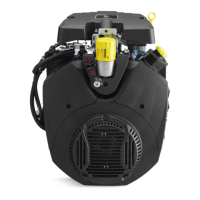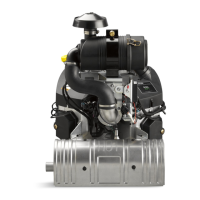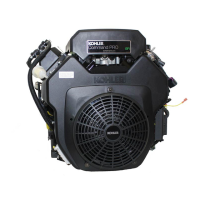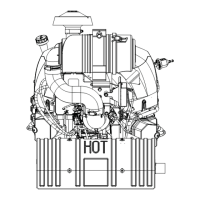39
EFI SYSTEM
62 690 13 Rev. A KohlerEngines.com
6. A special "dry to touch" anti-seize compound is applied to all new oxygen sensors at factory. If recommended
mounting thread sizes are used, this material provides excellent anti-seize capabilities and no additional anti-seize
is needed. If sensor is removed from engine and reinstalled, anti-seize compound should be reapplied. Use an
oxygen sensor safe type anti-seize compound. It should be applied according to directions on label.
Troubleshooting-Oxygen Sensor (O
2
)
Condition Possible Cause Conclusion
Low voltage output. Shorted sensor or sensor circuit.
Shorted lead wire.
Wiring shorted to ground.
Replace sensor or repair wiring.
Contamination of air reference. Remove source of external
contamination, protect air reference
area.
Air leak at sensor or gasket, sensor
upper shield damage.
Use recommended torque at
installation, replace gasket or sensor.
Revise application exhaust.
Shield sensor from damage.
High voltage output. Silica poisoning. Replace sensor.
Contaminated gasoline. Use high quality fuel.
Engine problem; misfi re. Correct cause of misfi re.
Excessive rich air/fuel ratio. Check for high fuel pressure
Leaking injector
Liquid fuel in vent line
Wiring shorted to voltage. Repair wiring.
Open circuit, no activity from sensor. Broken element .
Sensor dropped.
Hard blow to engine or exhaust
system.
Defective sensor.
Thermal shock.
Replace sensor.
Slow time response. Open heater circuit.
Improper handling.
Carbon deposits.
Replace sensor.
Improper fueling. Correct fueling.
Incorrect or contaminated fuel. Use high quality fuel.
Excessive engine oil consumption
causing exhaust contamination or
other exhaust side contamination.
Correct engine condition.
Heater circuit open/shorted or out of
specifi cation.
Repair short in harness wires, replace
sensor.

